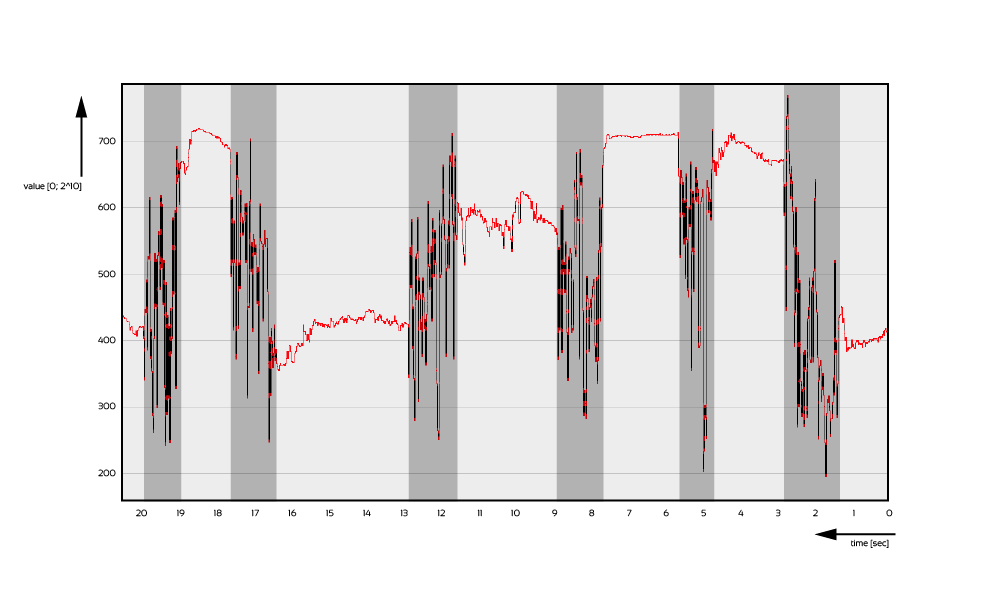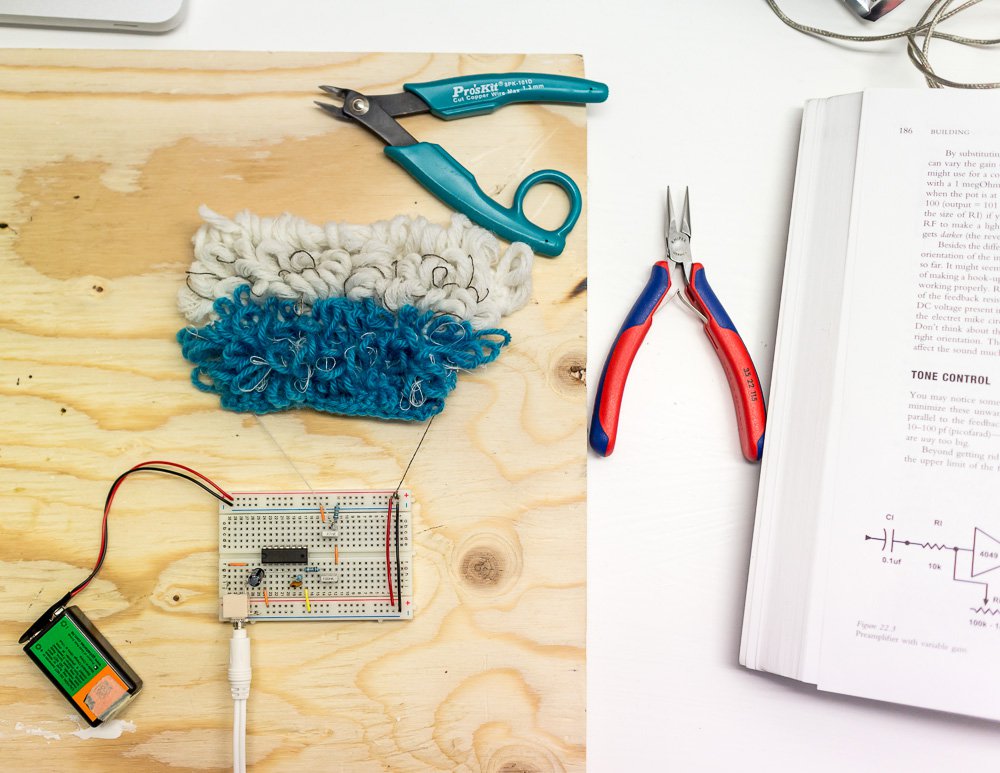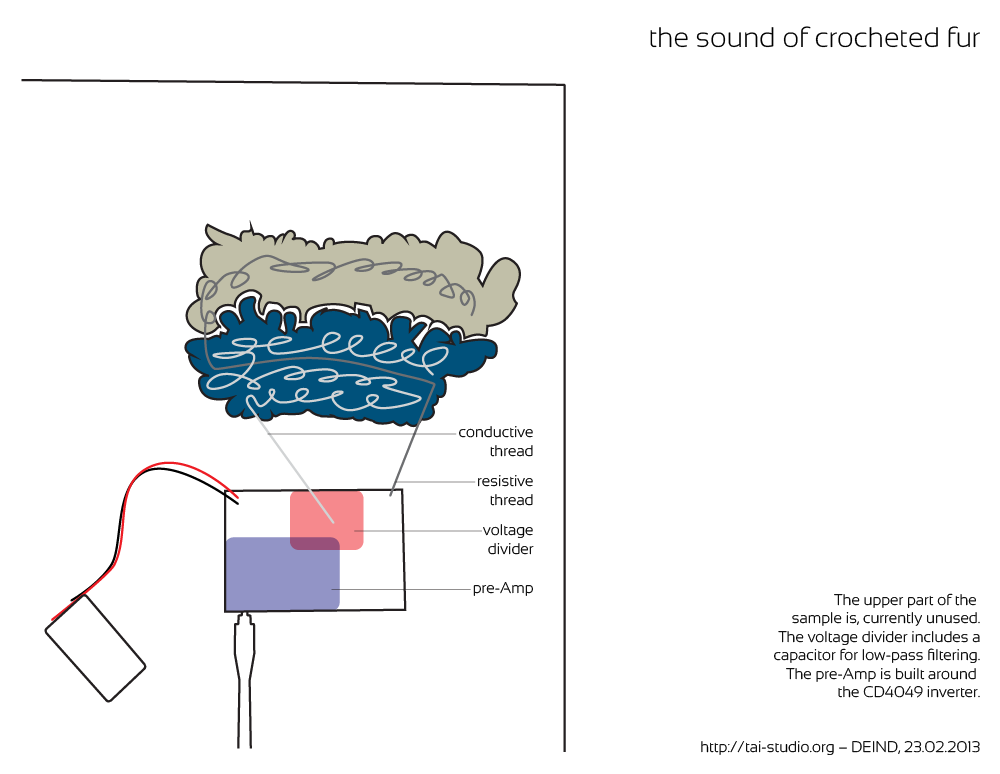Last week, I got a sample of crocheted fur from Ramyah. It consists of two different parts: a white part that has a conductive thread of low resistance woven into it and a blue part with high resistive thread.
Feeling
When touching the sample on its upper side, it feels soft. Application of pressure reveals the firm ground from which the single woollen loops are “growing” from. Overall, the structure invites to be touched.
Sensor application

To test the sample’s electric capabilities as a sensor, I hooked up the two areas to a voltage divider (one conductive thread, the other to ground) and measured the voltage fluctuations that appear when the area is touched by an Arduino and a SuperCollider patch. I soon found out that the white area with the low resistance yarn did not give reasonable results. Also, the previously intended usage of touching both areas at the same time was not compelling. By weaving a low-resistance yarn through the bottom of the blue area, I got promising results (see figure). Touch “events” can be clearly separated from non-touch events. It is possible to transform this into a digital on/off event by removing the DC offset and peak following. Both can be done with a simple op-amp circuit (see e.g. Nikolas Collins book handmade electronic music).

 Setup to test crocheted fur as a dynamic noise source.
Setup to test crocheted fur as a dynamic noise source.
A dynamic noise source
Extending the circuit by a simple preamp circuit built around the CD4049 inverter, it is possible to directly grab the noisy signal and feed it into sound processing and filtering. I actually had to reduce the signal’s level in order to prevent clipping in the op-amp. Also, the signal benefits from slight low-pass filtering via a capacitor near the voltage divider. Below, I added two sound samples, one with heavy low-pass filtering, the other with moderate low-pass filtering and a feedback capacitor for reducing possible noise.
Conclusion
The crocheted fur is a promising sensor type that we will continue testing and developing for both applications. I hope that further investigations will reveal that it is even possible to extract stroke sensitivity. Also, cutting the loops into strands would increase usability as it is currently easy to get caught by a loop.